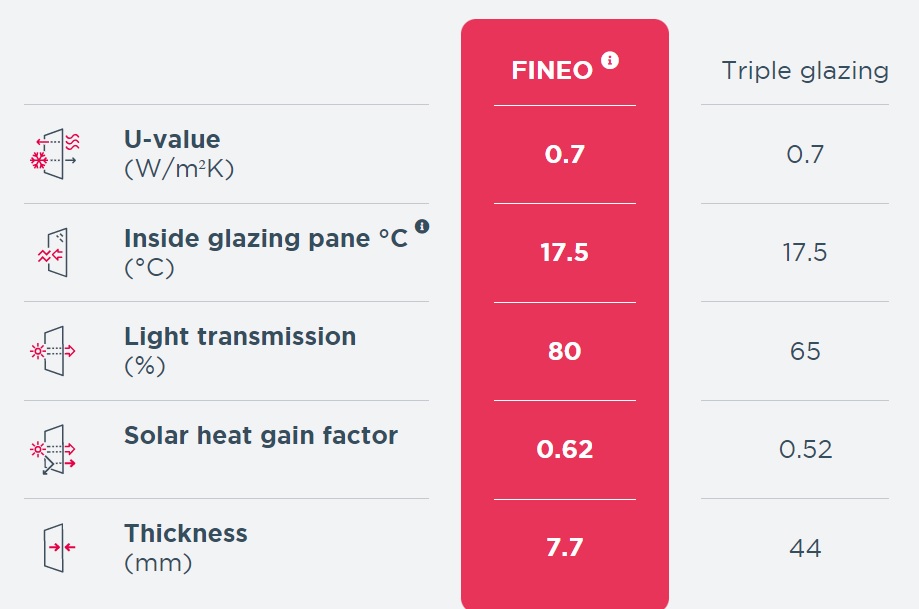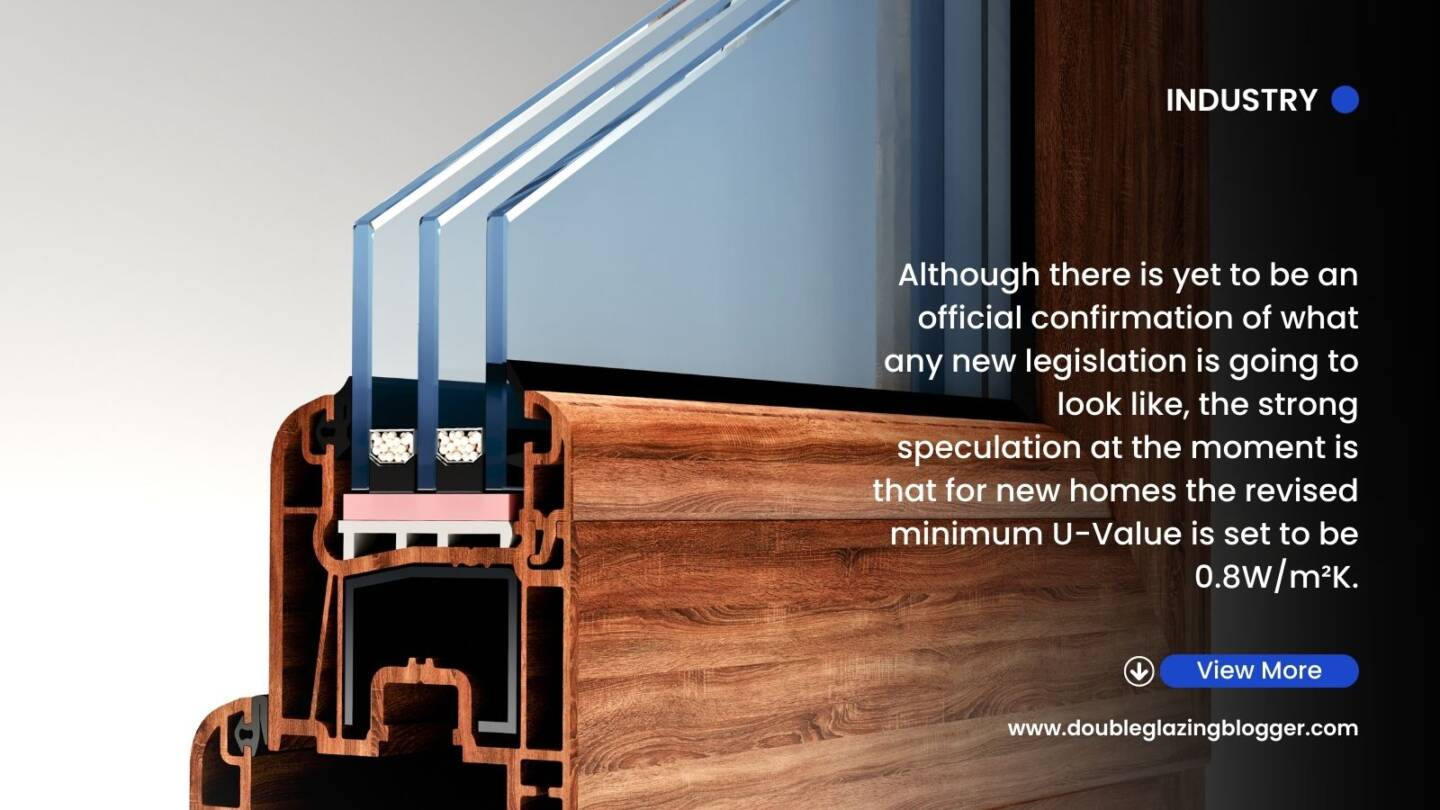All eyes are on 2025. The introduction of the Future Building Standard is going to be the biggest set of changes to how we build non-domestic and new homes in decades, with an aim to dramatically reduce the carbon footprint of our housing stock to meet net-zero targets by 2025.
These new regulations will affect the fenestration sector. In fact, it looks set to embed triple glazing firmly in place within the industry.
0.8 U-Value with Future Building Standard
Although there is yet to be an official confirmation of what any new legislation is going to look like, the strong speculation at the moment is that for new homes the revised minimum U-Value is set to be 0.8W/m²K. This would be a dramatic drop from 1.4W/m²K which is where we are at right now, and is the reason why you are seeing some systems companies in both the PVCu and aluminium spaces rush to bring products to market now to get ahead of the game.
Two such products are Zero90 from Liniar and Decalu88 from Deceuninck. Both products can meet the predicted new regulations two years in advance. Both systems have to be triple glazed in order to do so.
Earlier in the year, debate raged, which got surprisingly heated at times, as to whether triple glazing was the right way to go about achieving compliance with any new rules, considering that vacuum insulated glazing (VIG) is becoming an emerging option via Europe. I will cover the alternatives a little bit further in this piece.
But during that debate, despite the pros of VIG, it did appear that the industry would still come down on the side of triple glazing as a means of complying with the Future Building Standard. This poses a win for spacer bar producers, who I assume would have been fully behind pushing for this approach, as well as the major glass makers who can look forward to increasing their sales of glass in the double-digit %’s.
There had been some suggestion at the end of last year by a couple of people I spoke to that the 0.8 level could be watered down to 1.0. That speculation seems to have drifted away, especially now that we have a number of systems companies being able to demonstrate products that achieve that level, two years in advance of the FBS becoming law.
As it stands right now, it does look like these new regulations are going to prove to be a major boost to sales of triple glazing.
Investment needed for triple glazing
Triple glazing has actually seen a fairly robust increase in interest over the last year or so. We can safely put that down to the high cost of energy and homeowners seeking out new ways to try and cut down on their bills in any way they can.
A quick look at Google Trends shows a very clear trend upward:
That being said, it’s clear a great deal of the sector is still not on board with the idea of triple glazing becoming a larger part of the industry. In a recent Deceuninck customer day, comments in a debate around triple glazing raised issues around hardware, weight, cost and other sticking points we have all become familiar with. And they are valid.
If we are to see more widespread adoption of triple glazing due to new regulations in 2025, more of the sector is going to need access to hardware that can cope with the extra weight that triple glazing brings. Something is going to have to be done to soften the blow when it comes to cost, especially considering the environment we’re all in right now. Transport and storage are going to have to be addressed and there will be no doubting that health and safety will be a factor due to the extra weight involved.
The sector is going to have to scale up pretty sharpish if it is going to be able to facilitate the requirements brought to us by the Future Building Standard.
The argument for the alternative
Now back to vacuum insulated glazing. You should know what this is by now. If not, click here and you can quickly catch yourself up on what VIG is.

CREDIT: Fineo
A couple of months back a debate raged on Twitter about the benefits of VIG and how it could be used to meet 2025 regulations. For what it is worth, I am a fan of this option. Whilst it is more expensive than triple glazing, it is becoming more widely adopted in Europe, and with scale, both abroad and with some investment at home, this could be brought down.
The environmental benefits are clear and stand head and shoulders above triple glazing and double glazing for that matter. The ultra-thin double glazed VIG unit at just 7.7mm and a barely-there cavity can achieve a 0.7 u-value and allow 80% light transmission. All whilst using less material. The argument that less is more is apt here. If the world is trying to move to a place where all sectors get more out of using less, surely this has to be an option which is explored more?
What’s more, weight becomes even less of an issue. You could store more of it. Transport more of it on vans. Advertise to the outside world that residential fenestration can really drive forward change.
Cost is the only thing holding VIG back. Profiles would still need to be adapted with new beads produced for example. But I would argue that the amount of change and heavy adaptation would be limited when compared to triple glazing.
But, putting my sceptical head on, and understanding how this industry works, spacer bar companies and glass companies will not want to be frozen out of this change. Imagine if VIG really took off. Is the sector really going to let the sales of spacer bars plummet? No, it won’t. So triple glazing it will be.
Lets not ignore the alternatives though, eh?
To get weekly updates from DGB sent to your inbox, enter your email address in the space below to subscribe:
By subscribing you agree to DGB sending you weekly email updates with all published content on this website, as well as any major updates to the services being run on DGB. Your data is never passed on to third parties or used by external advertising companies. Your data is protected and stored on secure servers.







VIG has its place in the niche Heritage market and other permitted areas where conventional double or triple glazing cannot be installed. In my opinion, it is too expensive and due to its production method, can never be a mainstream mass market product. Additionally, 0.7W/m2.K is not good enough! Triple are at 0.5W/m2.K. From a sceptical point of view, if VIG did become a mass market product with multiple manufacturers in a competitive market, would it keep its integrity and what it purports to be? There were marketing claims of ‘heritage units’ that are 4mm cavity with virtually no edge… Read more »